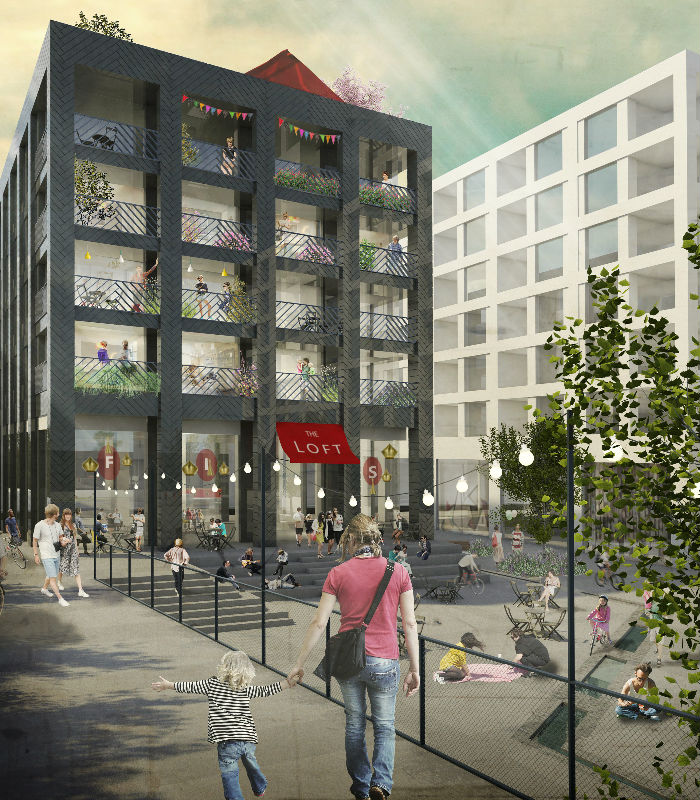Design Review panels now cover the entire country. They are available at regional and local level, with London alone boasting 22 panels at local authority level and another three covering the whole of the capital.
Design Review was given a huge boost by the National Planning Policy Framework (NPPF), which reinforces its role in ensuring high standards of design.
The national network of regional Design Review panels was completed in 2012 with the addition of the London Design Review and scores of smaller panels, often set up by local planning authorities, are now in place. Some are long established, while others have only had one or two reviews.
Architects are invariably the design presenters, but as use of Design Review continues to grow, many are not yet making the best use of the process, say established panel members.
The most common criticism of Design Review in practice is that schemes are presented at too late a stage, which stems from a lack of understanding of how Design Review works best.
‘Early constructive discussions with a Design Review Panel help the design development process,’ says Colin Haylock, who currently sits on the joint Oxford/CABE panel and the Planning Committee for the Old Oak and Park Royal Development Corporation charged with re-shaping a large swathe of West London.
‘The best presentations show the challenges of the brief and the site and how the designer is responding to challenges, which amounts to a critical review of your own thinking. Architects should be open to re-examination of what they are doing and making changes.’
Ben van Bruggen, co-chair of the Design South East review panel and chair of Lewisham Gateway – and like Haylock a RIBA Planning Group member – says not all panels are consistent in their approach. He is currently chairing a Place Alliance working group that is looking at how greater consistency might be introduced.
‘The key to good design review is constructive dialogue. Design Review involves objective and subjective assessment and good panel members will know the difference and how to express this.’
Van Bruggen says all architects should be familiar with Design Review Principles and Practice, the guide produced jointly by Design Council CABE, the Landscape Institute, RTPI and RIBA.
He shares Haylock’s view that the key question is the timing of the review. He also warns architects against overly long presentations that leave little time for discussion, which he stresses is the whole point.
‘Architects tend to remember student crits where nothing was good enough, which can make them fearful of Design Review. Instead architects should come armed with questions for the panel, which is there to help, and should be inviting views on design options and how to solve problems.’
Van Bruggen says in his experience, if projects have not been invited for Design Review by planning officers, planning consultants are the most likely to initiate the process, as they tend to be more amenable to changes if they think the review process will help to get the local authority on board and secure planning permission.
Neil Deely, co-founder of Metropolitan Workshop, has 14 years’ experience of CABE’s National Review Panel and currently chairs Newham’s panel, co-chairs Croydon’s new Place Review and is vice-chair of the London Legacy Development Corporation’s Quality Review Panel. He also shares concerns over the consistency of panels and wonders if there are enough good reviewers around to populate all of the panels.
‘It is important that people get the same experience from Design Review. Telling architects how you would do it yourself, is not Design Review,’ says Deely.
Conversely, Deeley says the stronger the designer, the more able they tend to be in taking Design Review advice on board.
He also points out that Design Review can provide something of a lifeline for architects who are aware that a client’s aspirations cannot be met – confirmation of this by a panel can put the design process back on track.

'Design Review success story' (see image): Lyndon Goode’s ‘Block A’ building forms part of a major new live-work development, Fish Island Village, in East London’s Hackney Wick.
Lyndon Goode’s design was the winning submission in a Peabody competition mandated by the London Legacy Development Corporation (LLDC). The LLDC’s Quality Review Panel subsequently found ‘much to admire’ in the design and went on to recommend it for planning approval after a series of presentations that scrutinised the design proposals.
The 580-home development includes buildings designed by Stirling Prize-winning practice Haworth Tompkins, Pitman Tozer, and high-quality landscaping by Farrer Huxley Associates.
Thanks to Colin Haylock, director, Haylock Planning and Design; Ben van Bruggen, director, van Bruggen Limited; Neil Deely, co-founding partner, Metropolitan Workshop; David Lyndon, director, Lyndon Goode Architects.
Text by Neal Morris









